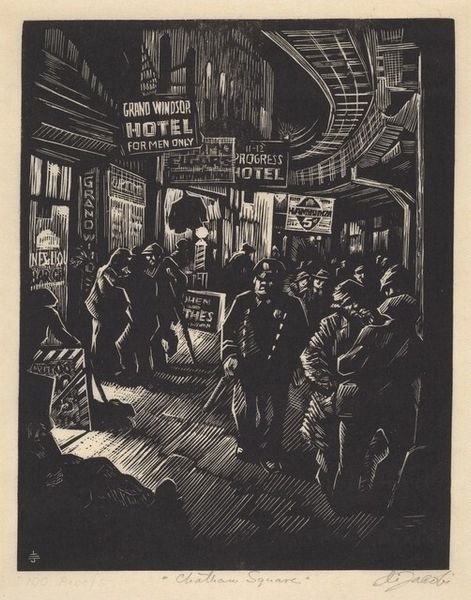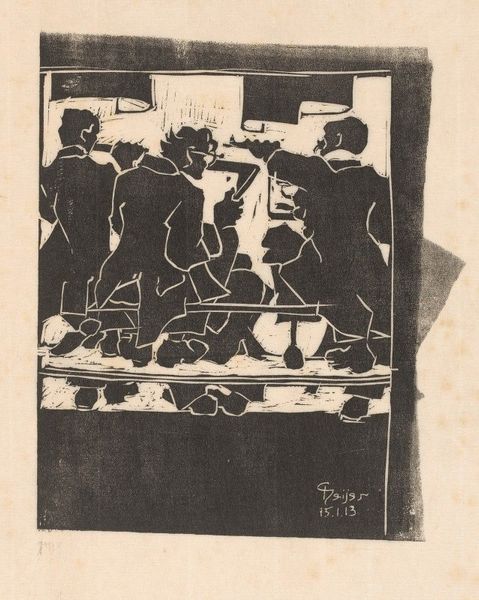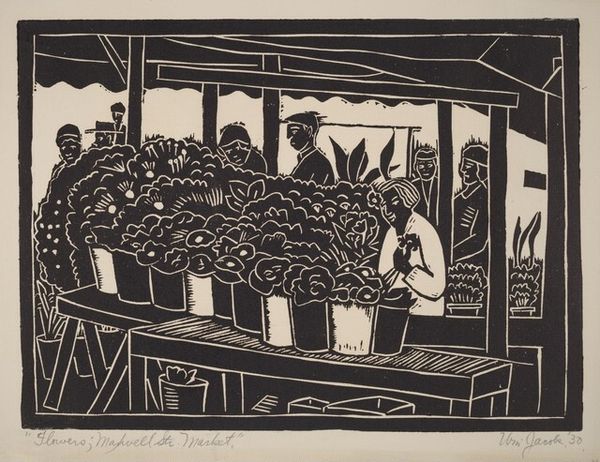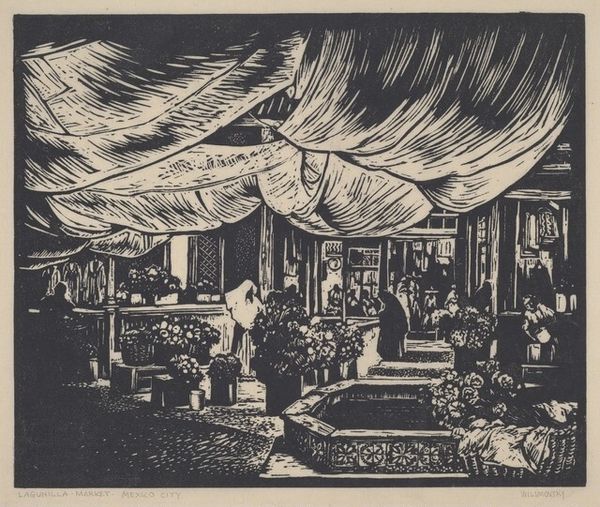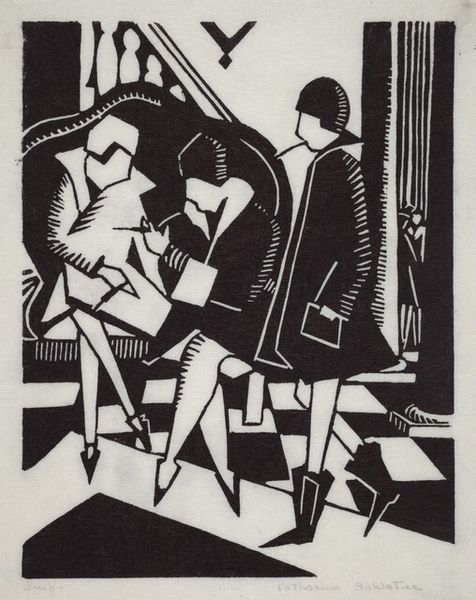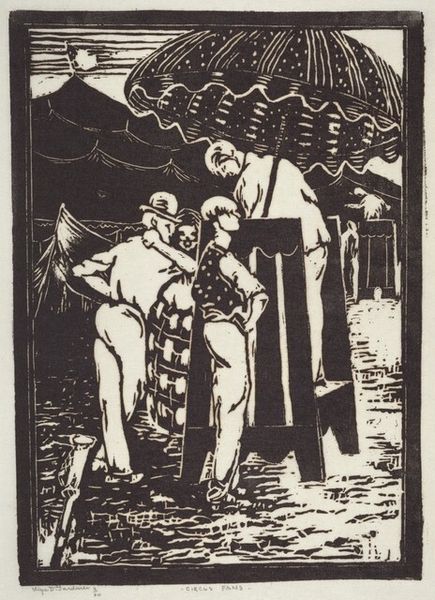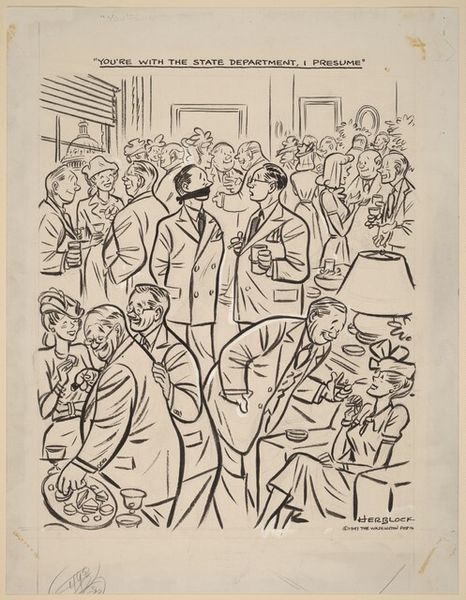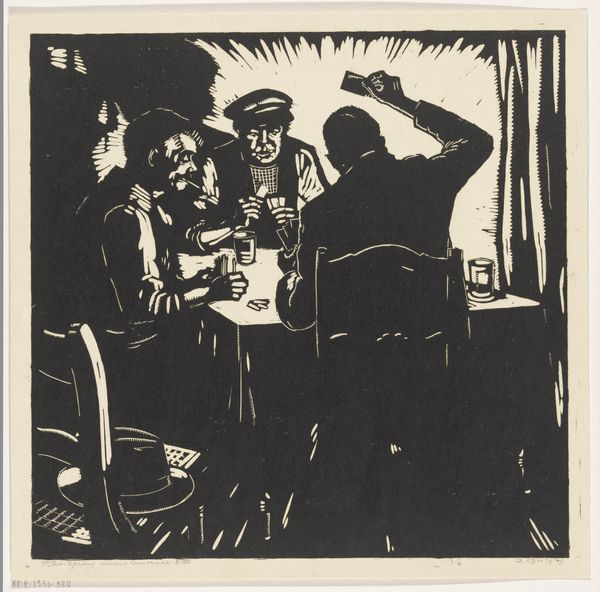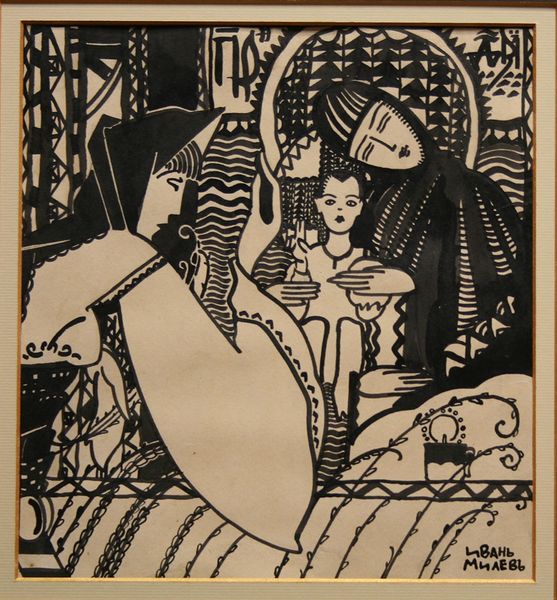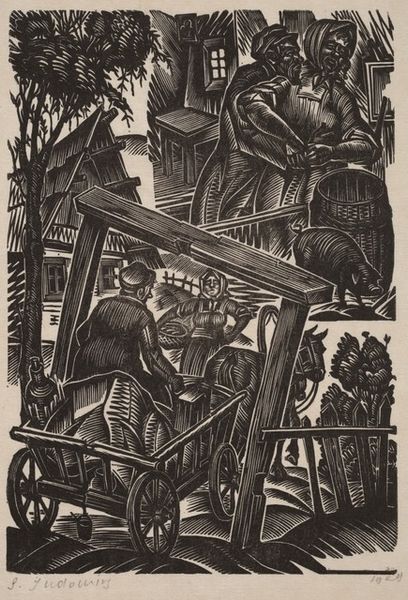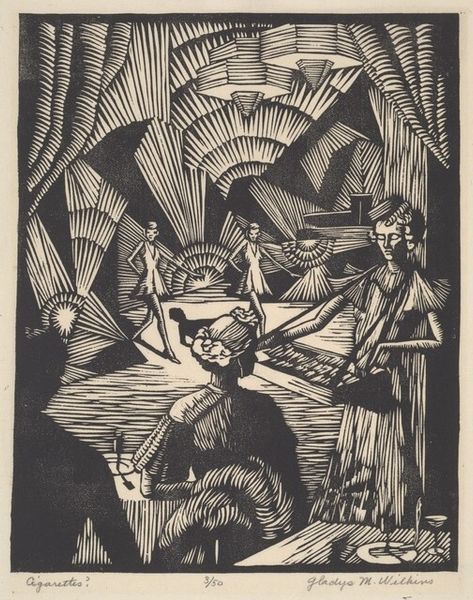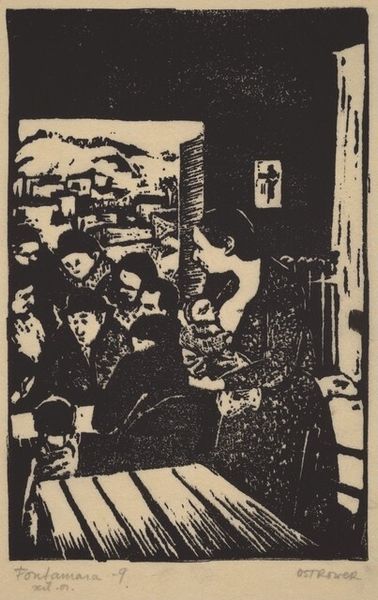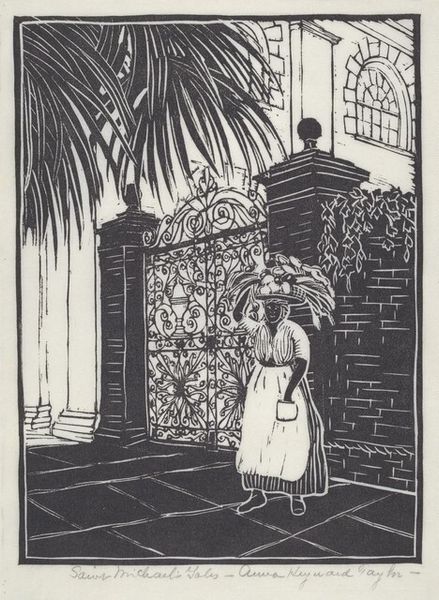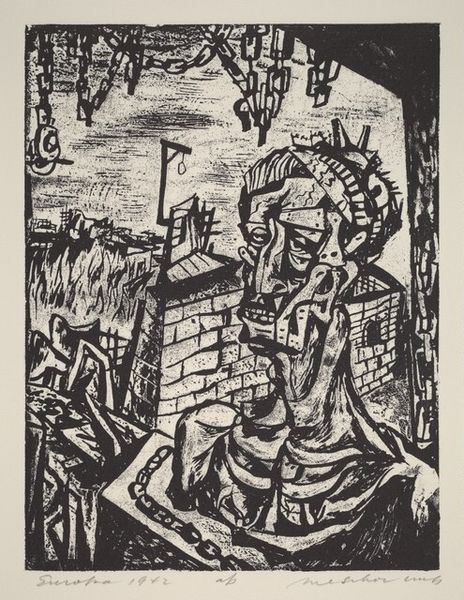
Dimensions: block: 266 x 224 mm sheet: 310 x 265 mm
Copyright: National Gallery of Art: CC0 1.0
Curator: Katharine Schlater's woodcut print, likely from around 1930, is titled "Untitled (Hot Dog Stand)". It's a wonderful piece for reflecting on everyday urban life of the time. What's your initial read? Editor: Stark! It’s immediately striking, isn’t it? The sharp contrast between the black and white; very graphic. All angles, really focusing the eye and directing the light. I want to find where it pools, reflecting off the shiny tabletops. Curator: Yes, there's an interesting play with light here, considering the print medium. And it definitely evokes a certain era, capturing a specific kind of public space, the archetypal "dogs" eatery in an interwar urban environment. This reflects an important facet of American social life as these establishments emerged to provide a specific quick bite to all classes of Americans. Editor: Note too, the perspective lines really thrust forward! They push that hot dog stand toward us while creating depth simultaneously with a sort of compression. It’s flattening out what looks like could be bustling energy, like figures packed one against the other on the edge of town! It’s a curious approach that heightens the emotional punch, almost melancholic. Curator: It seems you see something sinister lurking where the cultural milieu just tells of integration between immigrant populations and homegrown food vendors. Interesting how it highlights the cultural function of spaces like these. Schlater’s depiction hints at a much broader phenomenon of these establishments democratizing social status in urban settings at the time. Editor: Possibly, but regardless of democratizing function, look again: isn't there a darkness beneath it all? The figures are stiff, isolated despite being together. Look how it echoes across their stances: those lines driving through their bodies and dividing them! She has certainly harnessed that medium to show something unique here. It is, after all, what speaks most eloquently within a given piece, whether intentional or subconscious, right? Curator: Fair enough. Either way, this print encapsulates a compelling moment in urban history—how these spaces both shaped and reflected society's ever-changing landscape. Editor: Indeed, a very affecting distillation! The formal structures provide such an unexpected charge through their angles and textures that, for me, make this work truly remarkable.
Comments
No comments
Be the first to comment and join the conversation on the ultimate creative platform.
